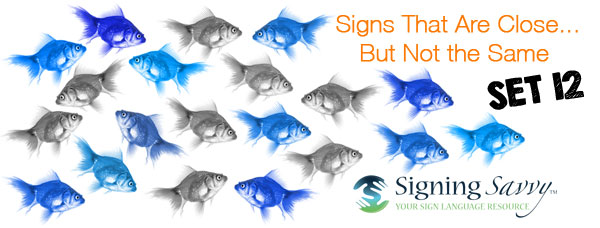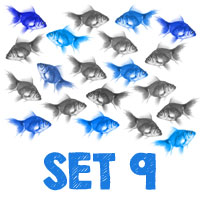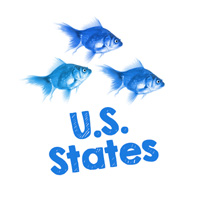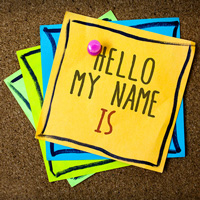
Signs That Are Close... But Not the Same - Set 12
This article is part of our “Signs That Are Close... But Not the Same” series, which highlights signs that look similar, but have different meanings.
The ASL signs shown below look similar, but are not the same. There are many ASL signs that when produced look similar, but in fact have a completely different meaning. Below you will find examples of such signs. Watch closely to see if you can see the differences. In addition, watch my eyebrows, look to see when I tilt my head or lean my body in a certain way, even what my mouth is doing. These nuances are called inflections and trust me, inflections matter.
1. Thrilled vs. Excited
THRILLED and EXCITED both use two hands in the 25 handshape with a similar placement with palms facing the body, in front of the torso. However, THRILLED has both hands move up the body in a single motion, while EXCITED has the two hands move upward in a circular motion.
Think of using one motion when signing THRILLED because your emotions bubble up and out from your stomach. When signing EXCITED, think of your heart beating rapidly with anticipation in a repeated motion because you are so EXCITED.
 |
2. Print vs. Newspaper
When signing PRINT and NEWSPAPER, the dominant G handshape starts open and then closes completely on top of the non-dominant open B handshape. PRINT is a single movement, while NEWSPAPER repeats the movement twice. The sign PRINT symbolizes the old style method of hand-setting type. NEWSPAPER repeats the sign for PRINT twice.
 |
3. Sold vs. Selling
When signing SOLD and SELLING, both hands in flat O handshapes move in an outward motion. SOLD has one movement, while SELLING has two movements.
The sign for SOLD is a very old sign, first recorded in the U.S. in the late nineteenth century.1 The sign originally symbolized holding up an item, like a piece of cloth, to show it off to the person you are selling to. It is also said to symbolize the old custom of merchants shaking handkerchiefs to attract customers.
The single, firm movement when signing SOLD signifies the completion of the sale, while the repeated movement of SELLING indicates the action of SELLING is still taking place.
 |
4. Signature vs. Contract
The dominant U handshape is placed on the non-dominant open B handshape when signing both SIGNATURE and CONTRACT.
The dominant U handshape, which is also the handshape used when signing NAME, represents the name, and the non-dominant, palm up, open B handshape represents the paper. So the sign represents the name going onto the paper.
SIGNATURE uses one, single movement while CONTRACT is a double, repeated movement.
You can remember SIGNATURE uses one, single movement because you sign your name one time on a piece of paper to make your signature.
You can remember CONTRACT has multiple movements because sometimes a CONTRACT requires you to add your signature in multiple places.
 |
5. Government vs. Federal
The location and movement of the signs for GOVERNMENT and FEDERAL are the same, but the handshapes used to form the signs are different. GOVERNMENT uses a 1 handshape, while FEDERAL uses a F handshape.
One way to remember the location and movement of GOVERNMENT is by the head is to remind yourself that governments are supposed to be people "thinking" about what is best for everyone. This sign was originally made with more of a circular motion and some historians have said the circular movement was meant to symbolize "people as a whole, and by touching the temple, indicated that they are of one mind."1 However, the sign was originally derived from the French sign for RÉPUBLIQUE (republic) and the true origin of the circular movement (which is less pronounced in the modern day sign) was from circular, tricolored badges worn on the hats of republicans during the French Revolution.
FEDERAL is signed the same as GOVERNMENT, except it uses a F handshape. You can remember it uses an F handshape because the word FEDERAL starts with the letter F. Although this is an initialized sign, it is an accepted ASL sign. Similarly, POLITICS, is also the same sign, but uses the P handshape, and is an accepted ASL sign. An exception to this pattern is the accepted ASL sign for GOVERNMENT uses the 1 handshape. You may see a G handshape used when signing GOVERNMENT, but that variation is considered Signed English.
 |
How can I figure out the difference between signs on my own?
If you see two signs that look close, but not the same, and you’re not sure, you may use Signing Savvy features to help you figure out the difference. All of our signs have sign descriptions and memory aids that members may access. Reading the sign description and memory aids for the signs will help you figure out the small differences between them that your eyes don’t catch at first. We also recommend using the pause and slow motion feature to slow down the video, so you may take a closer look. These features are available to Signing Savvy members.
Take a look, it's in a book!
These examples are aligned with the Visual Discrimination section of Lesson 7 (page 85) from Lessons and Activities in American Sign Language by Brenda E. Cartwright and Suellen J. Bahleda. Check out the book for more ASL Activities and watch for more examples from this series: "Signs That Are Close... But Not the Same."
Resources
 Brenda Cartwright is a seasoned interpreter, a master teacher, well known presenter, and author of several best selling sign language and interpreting textbooks from the RID Press. For 35 years Brenda was the Chair of the Sign Language Interpreter Program at Lansing Community College in Lansing, Michigan.
Brenda Cartwright is a seasoned interpreter, a master teacher, well known presenter, and author of several best selling sign language and interpreting textbooks from the RID Press. For 35 years Brenda was the Chair of the Sign Language Interpreter Program at Lansing Community College in Lansing, Michigan. Interpreter 4-1-1: Top 10 Pearls of Wisdom for Interpreters
Interpreter 4-1-1: Top 10 Pearls of Wisdom for Interpreters Interview with Switched at Birth Creator Lizzy Weiss
Interview with Switched at Birth Creator Lizzy Weiss Signs That Are Close... But Not the Same - Set 9
Signs That Are Close... But Not the Same - Set 9







Savvy User AnnettaThursday, October 31, 2019
This is exceptional to learning sign language. You have just about everything I need: the word, its picture, using it in a sentence, and of course the sign. Speaking as a beginner, I just wish you offerred some signs in slow motion. It helps thatbyou give a writen description of what to do. I just catch on easier [sometimes] as a visual learner.